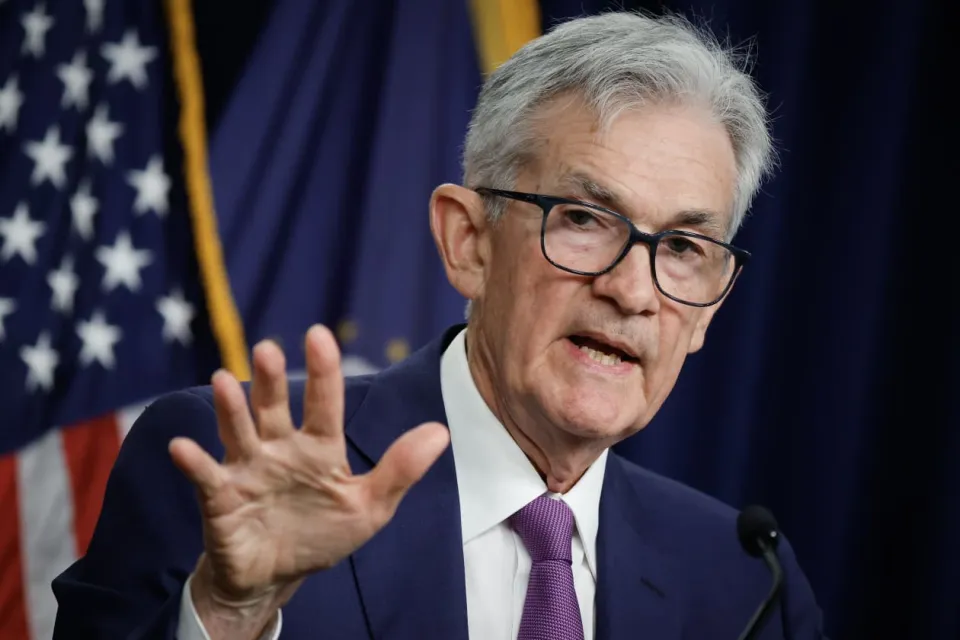Federal Reserve’s Upcoming Rate Cut: What to Expect in 2024
~ By Sujeet Rawat
Sep 15 2024, 06:01 PM

The Federal Reserve is expected to announce its first rate cut since 2020, with experts debating whether the cut will be 25 or 50 basis points. As the US economy shows signs of cooling, senior Fed officials, including Chair Powell, suggest a cut based on economic data ahead of the November 2024 election. Explore the reasons behind this potential decision and its impact on the market.
The Federal Reserve is once again in the spotlight, with anticipation building around an impending rate cut that could be the first in over four years. The last time the Fed lowered interest rates was in 2020, in response to the economic disruptions caused by the COVID-19 pandemic. However, after several months of inflationary pressures and a strong labor market, conditions seem ripe for a rate cut, expected to be announced ahead of the November 2024 election. This decision could shape the economic landscape for the coming months, influencing everything from market behaviour to consumer spending.
Senior Federal Reserve officials, including Chair Jerome Powell, have hinted that the upcoming rate cut will largely depend on the available economic data. The Fed has been closely monitoring inflation, employment levels, and overall economic performance as the US slowly eases out of a period of rapid growth and faces cooling markets. Experts are now debating whether the cut will be 25 basis points or a more aggressive 50 basis points. Regardless of the size, this marks a significant shift in the Fed’s policy direction, particularly since the central bank has kept its lending rates at a two-decade high for the past 14 months.
In previous statements, Powell and other senior officials have stressed that any decision to reduce rates will be data-driven, particularly as the Fed's mandate is to maintain maximum employment and stable prices. This potential rate cut would mark a critical moment in the economic cycle, coming just two months before a major election in the United States. Analysts have pointed out that, while the Federal Reserve operates independently, its actions will undoubtedly be scrutinized as the election approaches.
Market watchers are now left wondering how big the rate cut will be. A 25 basis point cut would signal caution, allowing the Fed to ease into a more dovish stance while continuing to gather more economic data. On the other hand, a 50 basis point cut would be seen as a more aggressive move, possibly suggesting that the Fed believes the economy needs stronger support as it cools. The key lending rate has been held steady for over a year, with the Fed reluctant to lower rates too soon in the face of supply chain disruptions and a robust labor market.
READ| Wall Street Gains Amid Speculation of Fed Rate Cuts: Key Insights for Investors
This rate cut, however, may indicate that the central bank believes the labor market has finally cooled enough to justify reducing borrowing costs. With inflation showing signs of weakening and economic conditions stabilizing, the Fed may decide it’s time to take a more supportive stance towards growth. Some economists believe that while the size of the cut is still uncertain, the decision itself is almost inevitable given the current economic data.
Looking back, the Federal Reserve was quick to raise rates in 2022 as inflation began to surge, fueled by post-pandemic supply chain issues and increased consumer demand. The aggressive rate hikes were aimed at curbing inflation, which had reached levels not seen in decades. However, as inflation has come down from its peak, the Fed has been able to maintain a wait-and-see approach, keeping rates high while waiting for clearer signs of a cooling economy.
Now, with more data showing that inflation is finally slowing and the labor market showing signs of softening, the Federal Reserve appears ready to make its move. Analysts from major financial institutions, including Bank of America, expect the Fed to initiate a series of rate cuts starting with a 25 basis point reduction, followed by additional cuts in the months to come. This aligns with the Fed’s historical approach of making small, gradual cuts to avoid destabilizing the economy.
As the central bank prepares for its next move, the focus will be on how this rate cut impacts the broader economy. Lower interest rates typically make borrowing more affordable, which can be a boon for consumers and businesses alike. However, there’s also the concern that cutting rates too aggressively could lead to increased inflationary pressures down the line. The Fed will need to strike a delicate balance between supporting economic growth and avoiding a resurgence of inflation.
Looking ahead, many expect the Fed to provide updated economic forecasts along with its rate cut decision. These forecasts will be closely watched as they will give markets an indication of what to expect in terms of future rate cuts and overall monetary policy. As always, the Fed’s actions will be heavily influenced by the latest economic data, and any unexpected changes in inflation or employment could lead to adjustments in the central bank’s strategy.
ALSO READ| Government Lifts Minimum Export Price on Onions to Boost Exports
In summary, the Federal Reserve’s upcoming rate cut is shaping up to be a pivotal moment for the US economy. While the size of the cut remains uncertain, the fact that the Fed is considering a reduction in borrowing costs after several years of rate hikes is a clear sign that economic conditions are changing. With inflation under control and the labor market cooling, the Fed’s decision to lower rates could provide much-needed relief for consumers and businesses alike.
Recent Posts
Trending Topics
Top Categories
QUICK LINKS
Copyright © 2024 Arthalogy.com. All rights reserved.
